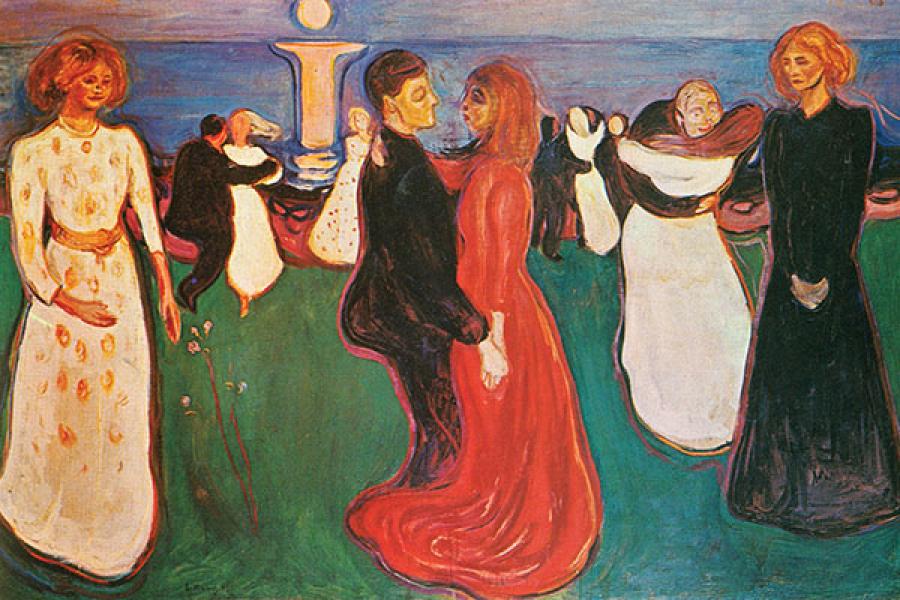
A simple guide to expressions of art
How to tell impressionism apart from expressionism
We often use art terms interchangeably. Do we know surrealism or, indeed, fauvism? Does cubism have anything in common with abstract expressionism? These movements, which have grown organically, occurred in the West and gave direction to art practices during different periods in history. Some of these major movements provided catalytic fodder to Indian artists as well. This simple guide attempts to explain these in the context of their history and the culture that inspired them.
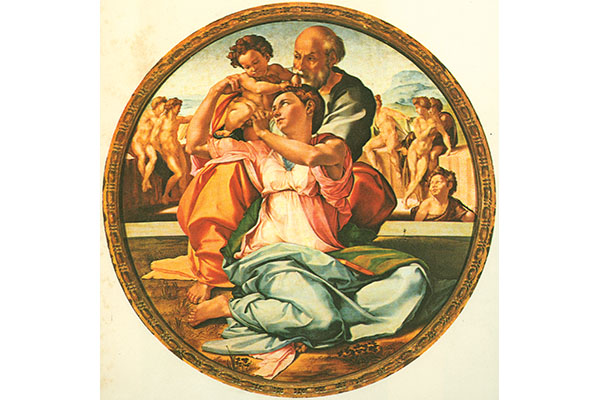
Renaissance (14th–16th Centuries)
Michelangelo
The Doni Tondo (The Holy Family)
Oil and tempera on panel, 1504-06
The world has much to thank the Medici family for. The business house that unleashed the creative force of The Renaissance in Florence and Venice saw the flowering of architecture and art that has left the world spellbound since, for their sheer audacity of imagination and powerful conception. The Renaissance paintings centred around Biblical themes with an emphasis on grandeur that was accentuated in narratives that humanised gods and mythological characters. The human body as voluptuous or desirable became a point of conversion. Michelangelo and Leonardo da Vinci weren’t the only artists who inspired generations of artists; others who contributed to the effort were Giovanni Bellini, Botticelli, Raphael, Titian and El Greco. Unlike the fame and spirit of competition that marked Renaissance artists, in India, miniature artists in the Mughal and Rajput courts continued to paint anonymously and in the small format. And none of them exercised the power and spell of David, which continues to fascinate us centuries after Michelangelo created the sculpture of a male nude.
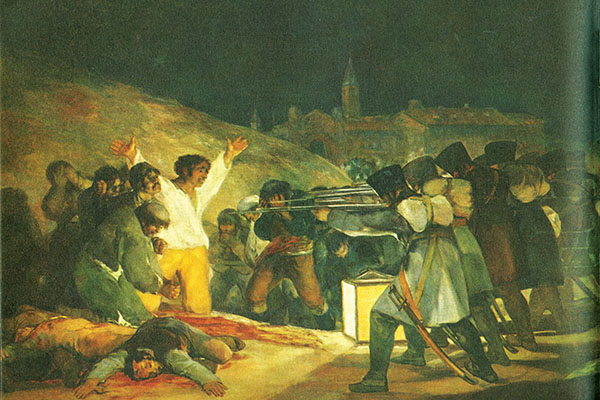
Francisco Goya
The Execution of the Third of May, 1808
Oil on canvas, 1814
The romantic artists had a more didactic approach. From the headiness of the heavens to more temporal realms marked a change in the approach to art, with subjects concerning society becoming prevalent. Romanticism as a movement was led by an artistic and intellectual temper as a resistance to scientific rationalisation in the wake of the industrial revolution. It began as landscape art, extended to portraiture, but it was human emotion and aesthetic that guided its narrative. It gained momentum in the first half of the 19th century before petering out, and aligned itself with literature in illustrating the greatest writings and poetry of the period. Some of the great artists of the time included landscapist JMW Turner, the portraitist Thomas Gainsborough, and others such as David Wilkie, Thomas Lawrence, Francisco Goya and George Stubbs. It coincided with the arrival of landscape art in India, where no such tradition has previously existed, and of the genre of oil paintings and European art practice.
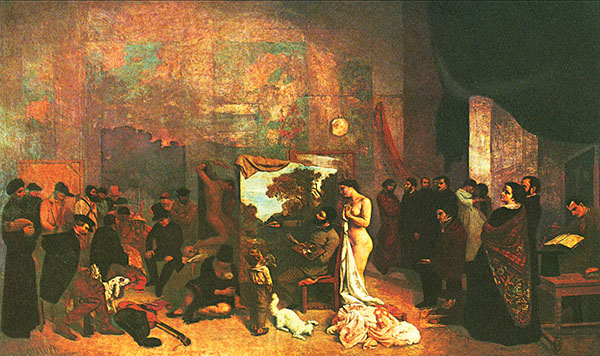
Jean Désiré Gustave Courbet
The Painter’s Studio
Oil on canvas, 1855
Realism was a reaction to Romanticism, literally springing up to challenge the notion of emotion in art. It used the prop of naturalism to communicate truthful representations. It eliminated any artifice, and the academic norms of depth, perspective, light and chiaroscuro became its guiding factors. Artists loved playing with light and shadow. Illusionistic realism created a sense of heightened reality that would later find its way to India, but in Europe, those who practised in this style included Jan van Eyck, Pieter Bruegel, Velasquez and a number of Dutch artists. With art schools opening in Calcutta and Bombay, academic training became part of the curriculum in India which saw the emergence of artists like MV Dhurandhar or JP Gangooly who claimed fealty to the style.
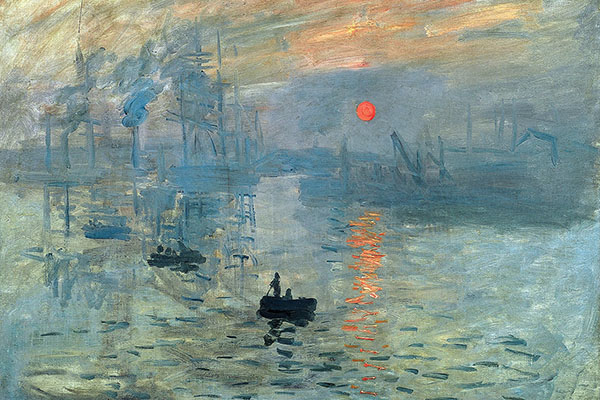
Claude Monet
Impression, Sunrise
Oil on canvas, 1872
One of the world’s most recognised and popular movements in modern art, impressionism had its genesis in Paris and its flagholder was Claude Monet who became closely associated with the style. Literally an impression of the real, the artist found himself challenged through the use of fine brushstrokes that evoked a real scene but which, on closer inspection, can best be described as being pixilated, in a manner of speaking. This departure marked what would result in distortion and abstraction, but its sense of displacement flowered into a major movement that was led by Camille Pissarro, Édouard Manet, Armand Guillaumin, Edgar Degas, Pierre-Auguste Renoir and, of course, Claude Monet. Landscapes, Monet’s water-lilies, and scenes of figures set in gardens became favourite subjects. In India, artists of the Bengal School appropriated the technique in their watercolour paintings, most notably Abanindranath Tagore and Prosanto Roy.
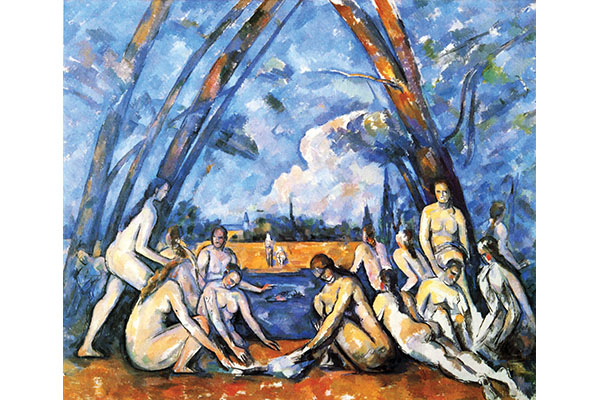
Paul Cézanne
The Great Bather
Oil on canvas, 1898-1905
With a view to add a more solid foundation to the art being practised, the post-impressionist artists retained the impressionist use of vivid colours. Their style and subjects became more robust and expressive, and geometric forms assumed greater importance. Pointillism became one facet, while Vincent van Gogh created a structure that was distinctive for his use of brushstrokes. Several impressionists moved away from the ephemeral lightness of their work to embrace post-impressionism, most notably Camille Pissarro, but it was Paul Cézanne who made it somewhat more solid. Other followers of the style included Paul Gauguin, Seurat and Henri Matisse. Post-impressionism was taught in Indian art schools as well, but it would remain for NS Bendre to adapt pointillism to his body of work in the mid-20th century.
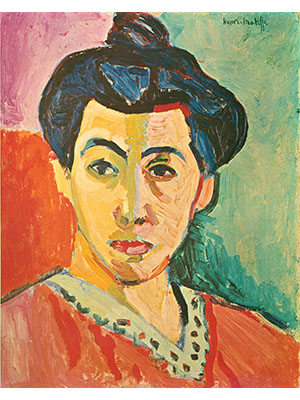
Fauvism (Early 20th Century)
Henri Matisse
The Green Stripe
Oil on canvas, 1905
Henri Matisse strayed off the post-impressionistic to launch, with Claude Derain, what has come to be described as fauvism. The fauvists rejected the representational in favour of strong colours, vivid brushstrokes and the beginnings of abstraction. They cared little for realistic depictions, so a lake was not required to be blue and a tree could be pink. This would set the tone for much of the development of modernist art in the 20th century. Its major exponents included Gustave Moreau, Kees van Dongen, Raoul Dufy, Georges Henri Rouault and Georges Braque. Some who transgressed into the territory included Paul Cézanne and Paul Gauguin. The term, which means “wild beasts”, became a colloquial reference to artists creating brushstrokes not necessarily confined to the brush, but using direct pourings of paint on canvas, the knife and even painting directly using one’s hands.
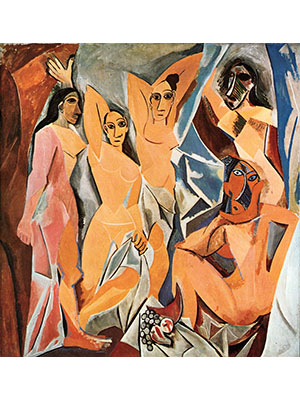
Cubism (Early 20th Century)
Pablo Picasso
Les Demoiselles d’Avignon
Oil on canvas, 1907
modern art without Cubism would be difficult to imagine today. Its influence has provided direction to artists worldwide. Its leading practitioner was Pablo Picasso who dissected the subject of his canvas into various planes with angled lines. This departure from the notionally realistic would become the prototype for artists and lead to its culmination in complete abstraction. What Picasso began soon found compliance in the works of abstract artists Georges Braque, Robert Delaunay, Fernand Léger and Juan Gris. The representation of the three-dimensional in a jigsaw-like manner was enthusiastically received by artists who were tired of the purely representational, particularly with the advent of photography. Indian artists were quick to welcome the trend, but most found their response to be less rigid, more lyrical and gentle, whether it was GR Santosh, NS Bendre, Tyeb Mehta, Jehangir Sabavala or high modernists like Biren De. Most of them dropped the cubist style in favour of a more distinctive individual voice as their work matured.
Expressionism (Early 20th Century)
Edvard Munch
The Dance of Life
Oil on canvas, 1899-1900
Expressionism made emotion central to works of art once again, but the representation became highly subjective, built as an idea rather than any attempt at being realistic. In that sense, the psychology of the subject gained pre-eminence. The most obvious example of this is Edvard Munch’s ‘The Scream’, where the terrifying angst caused by claustrophobia, loneliness and fear was alarmingly evoked despite an absence of rational imagery. This perspective of modernism has defined art thereafter, and its implications have been as long-reaching as they have been wide. Led by a German group called Die Brücke, it found support from Wassily Kandinsky, Paul Klee, Franz Marc, Egon Schiele, Marc Chagall and others. The expression of the idea as central to the act of artistic creation would become part of popular culture, and in India, the modernists might well be labelled expressionists for their deft adaption of the trope. Most members of the Progressive Artists’ Group are referred to as expressionists, including MF Husain and FN Souza, and even SH Raza’s gestural abstract works influenced by Mark Rothko fall in the realm, as do those of Tyeb Mehta and other high modernists.
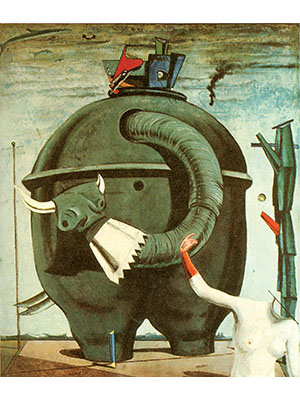
Surrealism (Early 20th Century)
Max Ernst
The Elephant Celebes
Oil on canvas, 1921
Identified forever with Salvador Dali, surrealism dealt with the idea of the fantastic created from imagery that challenged our perception of reality. This resulted in experimentation that was exciting. This was a time when Sigmund Freud’s psychological studies of the mind came into prominence, and artists used it to project a dream-like state or sequence in their paintings. Artists who responded to this heightened consciousness found easier acceptance from the world of science, which was based on similar preposterous experimentation, and literature, where it formed the basis of magic realism. Jehangir Sabavala was Dali’s Indian counterpart in both art as well as appearance. The surrealists included artists like René Magritte, Marcel Duchamp, Frida Kahlo, sculptor Alberto Giacometti, Paul Klee and Joan Miró
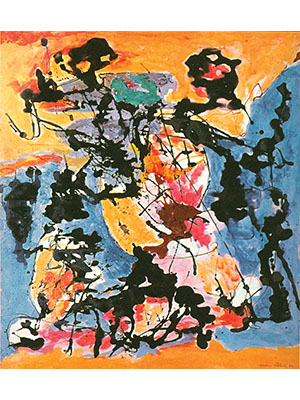
Abstract Expressionism (1940s)
Jackson Pollock
Number 12
Acrylic on canvas, 1952
India’s most expensive artist VS Gaitonde’s work is described as non-representational. Gaitonde was inspired by Mark Rothko whose gestural abstraction won over the likes of SH Raza. Abstraction requires the idea of the familiar undergoing a complete metamorphosis, so it is merely its idea that gains dominance. And yet, viewers respond to these works for their ability to communicate emotion. Some critics have referred to works of abstract expressionism as brain food for the artist’s ability to ingest them and regurgitate the idea as a metascape, such as those practised by Akbar Padamsee. Internationally, the movement is identified most closely with the dripping paint works of Jackson Pollock and with the figuration of Willem de Kooning.
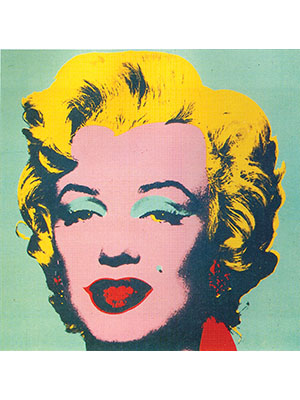
Andy Warhol
Marilyn
Screenprint on paper, 1967
Pop iconography was created around popular culture, which was inspired by advertising, design, cinema and comic books. Emerging from the world wars, the mid-20th century relaxed into a giddy space with hippies travelling around the world, and hallucinogenic substances lending an edginess to their creative expression. The movement challenged the notion of high art, taking popular, exotic or mystic ideas into account, as in the case of Andy Warhol and Roy Lichtenstein who straddled the worlds of advertising and art. This infusion of the popular brought art into the mainstream, so it is ironic that Warhol’s works command prices that are excessive enough to be no longer considered mainstream. India—a source for some of this inspiration—saw the emergence of neo-tantra as its response to this idea, with GR Santosh, Biren De and Sohan Qadri leading the change. In London, India-born Avinash Chandra created a body of canvases that was a reflection of the times. Even Bhupen Khakhar’s paintings could be said to be derived from this movement.
(This story appears in the Nov-Dec 2014 issue of ForbesLife India. To visit our Archives, click here.)
Post Your Comment
